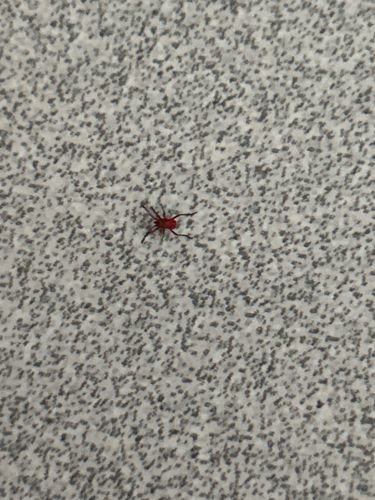Clover Mite
Scientific Name: Bryobia praetiosa
Order & Family: Order: Trombidiformes, Family: Tetranychidae (though some sources might place them in different families within Acariformes, 'Tetranychidae' is commonly associated with similar mites)
Size: Approximately 0.75-0.85 mm (about 1/30 to 1/32 of an inch) in length. They are very small, barely visible to the naked eye, appearing as tiny moving red dots.

Natural Habitat
Clover mites are commonly found outdoors in lawns, gardens, and grassy areas, particularly where there is a lot of lush vegetation. They are often found near foundations of homes and buildings, especially on the sunny side, and can sometimes invade structures in large numbers.
Diet & Feeding
Clover mites primarily feed on a wide variety of plants, including clover, grasses, and many other herbaceous plants and shrubs. They use their stylet-like mouthparts to pierce plant cells and suck out the chlorophyll.
Behavior Patterns
Clover mites are active in warmer temperatures, particularly in spring and fall. They tend to congregate in large numbers on sunny sides of buildings, especially if there's lush vegetation nearby. They seek cracks and openings to enter homes, often when their outdoor food sources dry up or temperatures drop. They do not bite people or pets.
Risks & Benefits
Clover mites are not harmful to humans or pets; they do not bite, sting, or spread diseases. However, they can be a nuisance pest when they invade homes in large numbers. When crushed, their red bodies can leave small red stains on surfaces, which can be difficult to remove from fabrics or walls. They are considered pests of turf and some ornamental plants but generally do not cause significant damage.
Identified on: 8/14/2025